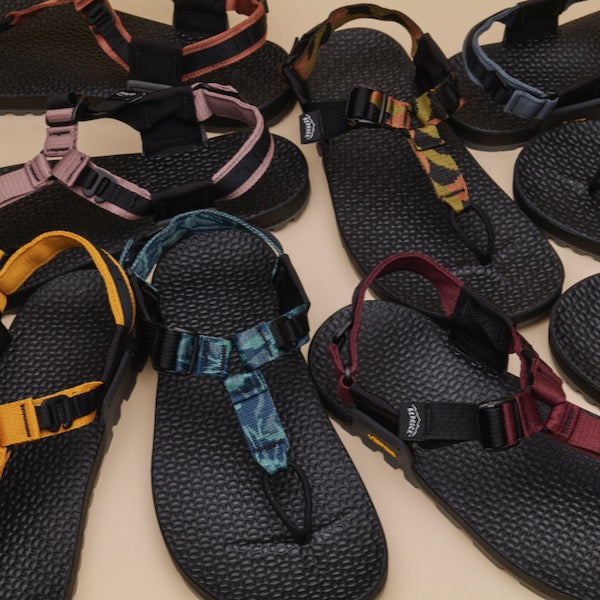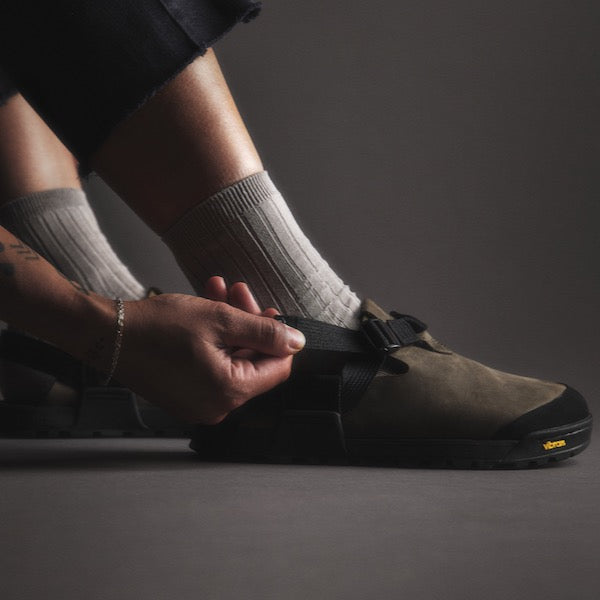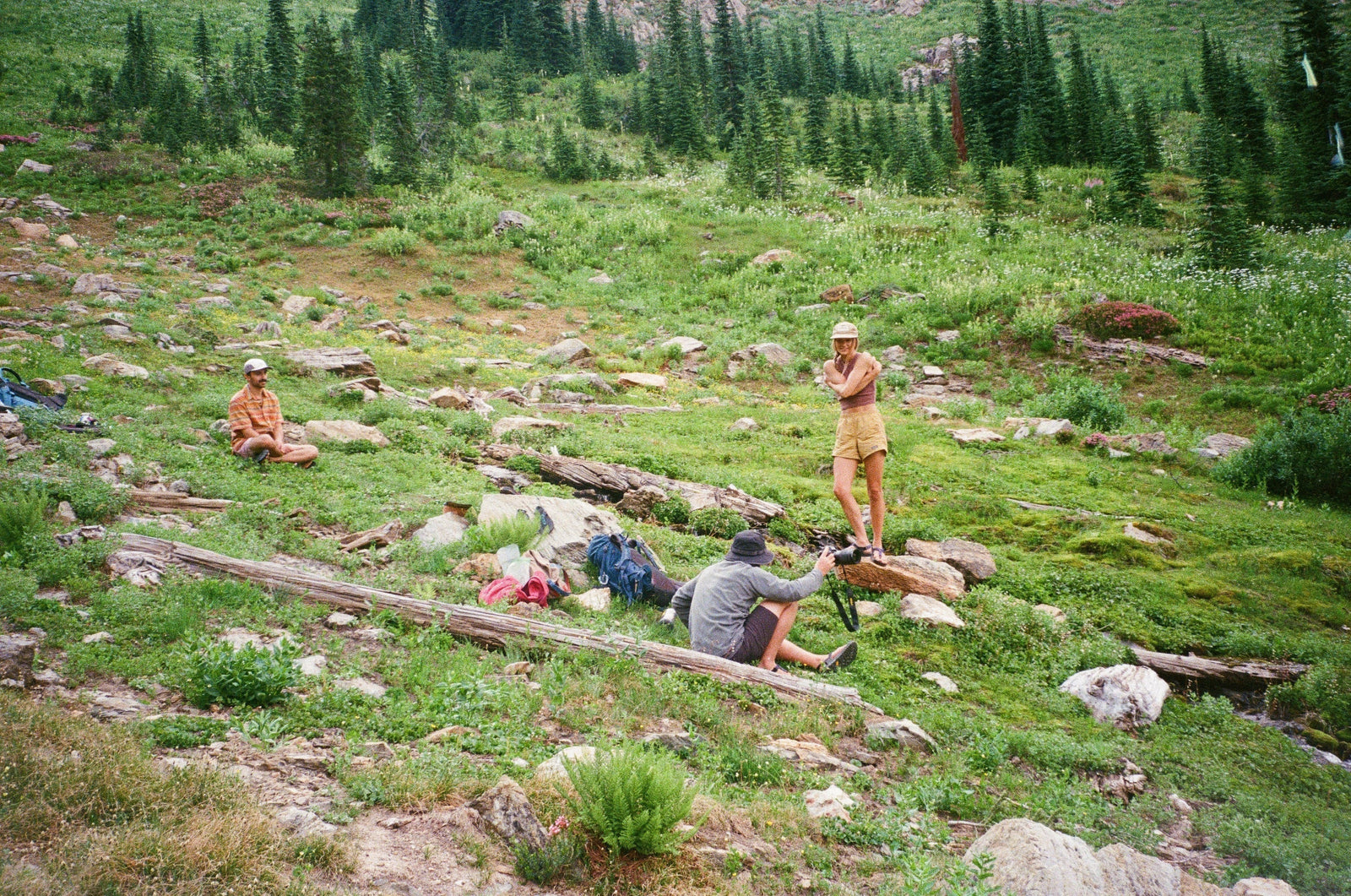Dan Stranahan is a Bedrock ambassador who travels often by bike in the Pacific Northwest and beyond. In this guest post, read about Dan's adventure with his partner Tessa along the La Ruta Malaas they journey through the heart of Cuba.
During the late 1950’s, Fidel Castro and Che Guevara led the Cuban Revolution that eventually toppled U.S.-backed dictator Fulgencio Batista. In the aftermath of the revolution, the U.S. placed an embargo on Cuba in 1959. Today, 50’s cars, old nightclubs and colonial architecture remain as active relics of a bygone era, continuing to mold Cuba’s image in the world’s imagination. Beyond the cliches of mobsters, antique pink convertibles, and the soundtrack to the Buena Vista Social Club, whatisCuba? We wanted to answer this question, so we went—by bike.
For us, Cuba was sleeping on beaches while fending off nocturnal crabs, passing bottles of rum while waiting out a flash flood, experiencing the Cuban National park system, getting towed up a hill by a donkey, and pedaling through historic U.S. battlezones. Beyond these specific moments of wonder, it was the people, food, and our own relationship that helped us explore the question of Cuba’s identity.
People
Cuban farm country is like the Kansas of the tropics. Flat expanses of fields woven together by dirt roads—except instead of corn, the crop is sugarcane. Several days in, we had been sweating for hours along the banks of a sun-exposed irrigation canal. In the distance, we saw what looked like a factory in the otherwise unmarked landscape. Soaked in sweat and desperate for a lunch spot away from the heat, we poked our heads in the gate and asked in our blunt-but-functional travel Spanish if we could sit in the shade of the factory wall.

Wanna trade bikes? (photo: Dan Stranahan)
The men at the gate lit up, equally excited and perplexed by our presence.
“Can we find water here?” we asked. “Absolutely!” One of the men replied, while the other ducked around the corner of a bare concrete room.

Unexpected friends, pasta, beer. (photo: Dan Stranahan)
From inside he pulled a sweating cold jug of water and the men invited us to join them for their communal lunch. We learned that we were at a cement factory, dining with the truck drivers there to pick up their loads. They offered us home-brewed beer from an unmarked plastic tub, and we obliged. Eating sardine sandwiches topped with the last shreds of string cheese we brought from home, we guzzled cold beer while our new friends globbed piles of spaghetti on metal trays, and we joked with the truckers about trading our 29’ers for their diesel beasts.

Dusty bikes after a welcome dry stretch. (photo: Dan Stranahan)
There are many stretches of La Ruta Mala where it is practically impossible to arrange a place to bed down ahead of time, or know where to find food or the internet. We often pedaled through towns and villages and just asked: Where could we set up our tent, find a hose, toiletries, shade, etc.? If someone didn’t know the answer, they’d call over their aunt/sister/neighbor and the whole community would be rallied to our cause.

Ernesto spoke English, German, French, and Spanish. Many of his language skills were picked up while practicing medicine abroad. One of Castro’s successes has been education; According to Ernesto, Cuba is a “doctor factory,” despite doctors earning less in Cuba than many other countries. (photo: Dan Stranahan)
We were always ready to camp whenever necessary, though more often than not the people we met insisted we stay in their homes. In the words of one of our impromptu hosts, “[Cuba] doesn’t have much, friendship is the only good we have to export. This is what we have to give, this is what we have to share.”
Partners
If you’ve never bike toured with your significant other, you may wonder what it’s like. Maybe you’ve fantasized about finding a loving partner who holds your same passion for soaking up every bit of bike touring’s pleasures.
Is this sort of shared bliss even possible? What are the challenges? How do you compromise, and how do you support your partner on a tour when one (or both) of you boards the struggle bus bound for blisters, exhaustion, and tears?

Stretch break. (photo: Dan Stranahan)
This trip was our first bikepacking excursion as a couple, and it would be fair to say we had some apprehension around these questions. Tessa and I met on a bike ride, and indeed we both love bikes. But we love bikes in very different ways, and our respective cycling histories do not cover the same terrain. Before bikepacking I was an XC mountain bike racer, always competing with my own personal best and tinkering with the minutia of my bikes and gear. I began bikepacking right at the beginning of tips on bikepacking.com, waypoints, and a legit GPS in the form of one’s phone. My most familiar rhythm is to lounge around and take my time until riding really hard, and then go back to lounging.

Hiding from the rain in an abandoned cafe as we entered the Sierra Maestra mountains. (photo: Dan Stranahan)
Tessa began touring on a solo ride from California to Maine. She fell in love with the solitude of riding alone and packed her Ortlieb panniers full of books, paper maps, and a strong desire to get lost. With her Cross Check and impractically heavy reading materials, Tessa wandered all over North and Central America, doing some serious under-biking on Oaxacan backroads long before the first titanium mug was ever dangled. Her M.O. is getting up early and ambling her way in a cardinal direction, stopping frequently to draw, read, or just head towards something intriguing on the horizon.

Treasure Map! (artwork and photo: Tessa Hulls)
Getting to know each others deeper quirks was a large component of this trip. Over time, things change--I don’t bike tour like a strung out squirrel anymore, but it still feels odd to take off without having a .gpx track in my pocket (Tessa considered throwing my phone in the ocean/jungle about 87 times). Ultimately Tessa and I made small compromises here and there. Sometimes we had slow mornings, sometimes we had early mornings and more breaks throughout the day. We were certainly less efficient due to having to meet our different needs at different times, and we both faced nausea, mechanicals and struggles through the mud at points when the other was doing totally fine. Patience and an open mind allowed us both to keep enjoying ourselves.

Our bikes, at rest outside the museum of The Bay of Pigs Invasion. (photo: Dan Stranahan)
Food
Sitting on the airplane en route to Havana, I nervously recounted the snacks I’d jettisoned from my bike box in order to make the 30kg weight limit, and pay $27(!) to fly our bikes all the way to Cuba. We were told to bring snacks, that we’d be eating a lot of ham sandwiches, and that the food situation was difficult. In reality, it was complicated. The Cuban government provides a certain amount of basic staples, but the tourism industry and private restaurants drive prices of basic vegetables to an unaffordably high amount for many Cubans. As privileged travelers who could afford 99% of the food available, we were shielded from the harsher realities most Cubans face when it comes to food.

Cooking dinner in a school basketball court, as a weekend town dance raged on several meters away. (photo: Dan Stranahan)
We never rode hungry, and we found food (or ate our packed food) whenever our stomachs growled. We just had to strategize more than you might while touring in the U.S, where you are usually never far from a burger and shake. We always found something, usually a quite tasty something. Below are photos and food items found along the way.
*all prices mentioned are in USD, and reflect the going rate in rural areas with few tourists (the majority of La Ruta Mala). A meal at a touristy café in a larger city often costed closer to the price of a meal in the U.S. If you’re planning a route through regions more trafficked by foreigners, your costs could be way different!
Peanut Brittle
Large bars of peanut brittle were available at most bus stations in major towns and they keep well, so stock up! We paid about 20c per bar of this perfect sweet and salty riding food.

Typical cafeteria. (photo: Dan Stranahan)
Juice, Batidos, Coffee!
All over Cuba you can find small ‘Cafeterias’ that typically sell some kind of cold juice—usually tamarind, mango, or guava— for about 10c a glass. If you’re lucky they might even have batidos, milkshakes made with cream and juice. Guava Batidos were a favorite of the whole trip. 1oz shots of sweet stovetop espresso—served in dollhouse-sized tea cups--could typically be had for 3c each. We usually had several.

Tamarind juice, and one of the best ham sandwiches we had. (photo: Dan Stranahan)
Along for the Ride
I intentionally brought bags with voluminous carrying capacity for food. The extra volume of my small Swift Fabio’s Chest was perfect for packing bread, sardines, honey, cheese, and the occasional veggies.

Fried eggs were plentiful and cheap: A couple times they were the only item on the menu in very rural cafeterias. Just add hot sauce…(photo: Dan Stranahan)
Food we brought from the US, and were glad we had:
Hot sauce
Coconut oil
Jar of peanut butter
Jar of Nutella
Garlic salt
Lightweight to-go container was great for leftovers
Bars and electrolyte tabs (Nuuns) were nice to have, but not really necessary.
Pizza and Ham Sandwiches
We found these everywhere, and they were a cheap (usually about 50c ea.) reliable source of carbs.

One of the best ‘traditional’ Cuban meals we had, in the town of Jibacoa. (photo: Dan Stranahan)
A Common Cuban Meal
The meal we ate most often was rice and beans paired with some kind of meat (chicken pork, or maybe fish!), fried plantain chips, and a small salad. Starved at the end of a long day and wanting real food, this always hit the spot and could usually be found for less than two dollars.

With how relatively cheap food was, we ate out a lot-and cooking was a welcome change. (photo: Dan Stranahan)
A Common Camp Meal
In the government-run ‘Panamericana’ grocery stores, we could usually find pasta, olives, and sardines. Mix in coconut oil and garlic salt, and this made for a delicious, fatty, and filling meal. If we had arrived during a different growing season, we would have had plentiful avocados and mangos as well.
Feet on the Ground (and in the mud)
Mud. So much mud. Having left in April on the edge of the dry/wet season, weather came a little sooner than expected. In the beginning of our journey, we experienced consistent afternoon rains that turned otherwise fun, fast dirt roads into impassable, derailleur-killing mess in the span of a few minutes. A passing farmer took pity on us and used his machete to whittle sharp points onto some discarded acacia branches, and this helped with digging out the mud that immobilized our wheels and drivetrains. But even with our “vampire stakes,” there were still days when we carried our bikes rather than riding them.

Tessa pushing up the first big hill, Day 1. (photo: Dan Stranahan)
Don’t let the elevation gain of La Ruta Mala fool you. Having done the Oregon Timber Trail with double the climbing in a shorter distance, I thought 33,000 feet of gain over 860 miles would be simple. Not so. Many of the mountainous sections of this route follow horse trails which are simply not built for bikes and require sustained hours of hike-a-bike, regardless of your skill level. However, the steep ridges draped in palms, coffee plants, and dense underbrush were some of the most fascinating landscapes to push through; our struggle fest always had a gorgeous backdrop.

A welcome jump in the Caribbean after hundreds of miles inland. (Photo: Dan Stranahan)
At the end of the day, the most valuable tools we brought were Our broken-but-functional Spanish, and our enthusiasm for the unplanned.
As we wound our way up into the mountains on our last day of riding, a curious dog popped out of the underbrush and began trotting along behind us. We gave our new companion (creatively named Dogfriend, the placeholder stuck) swigs of our water from a roadside yogurt container, and in return she kept running. Dogfriend stayed with us for 30 miles, eating cookies from our hands during sweaty snack breaks and panting in the shade cast by our loaded bikes. After we made the last long descent into Vinales, we anxiously looked behind us and waited for her to lope into view.
But she never showed up.
She was gone, and we won’t ever know what compelled her to run so far with a pair of adopted strangers, or how she knew to peel off before the need for a final goodbye. Our experience with Dogfriend was a perfect microcosm of our trip, where we encountered unexpected bonds that left us scratching our heads over the wonder of new companionship.

The last descent en route to Vinales, at the west end of the island. (photo: Dan Stranahan)
All photos unless credited otherwise and taken by and property of Dan Stranahan.














Leave a comment (all fields required)